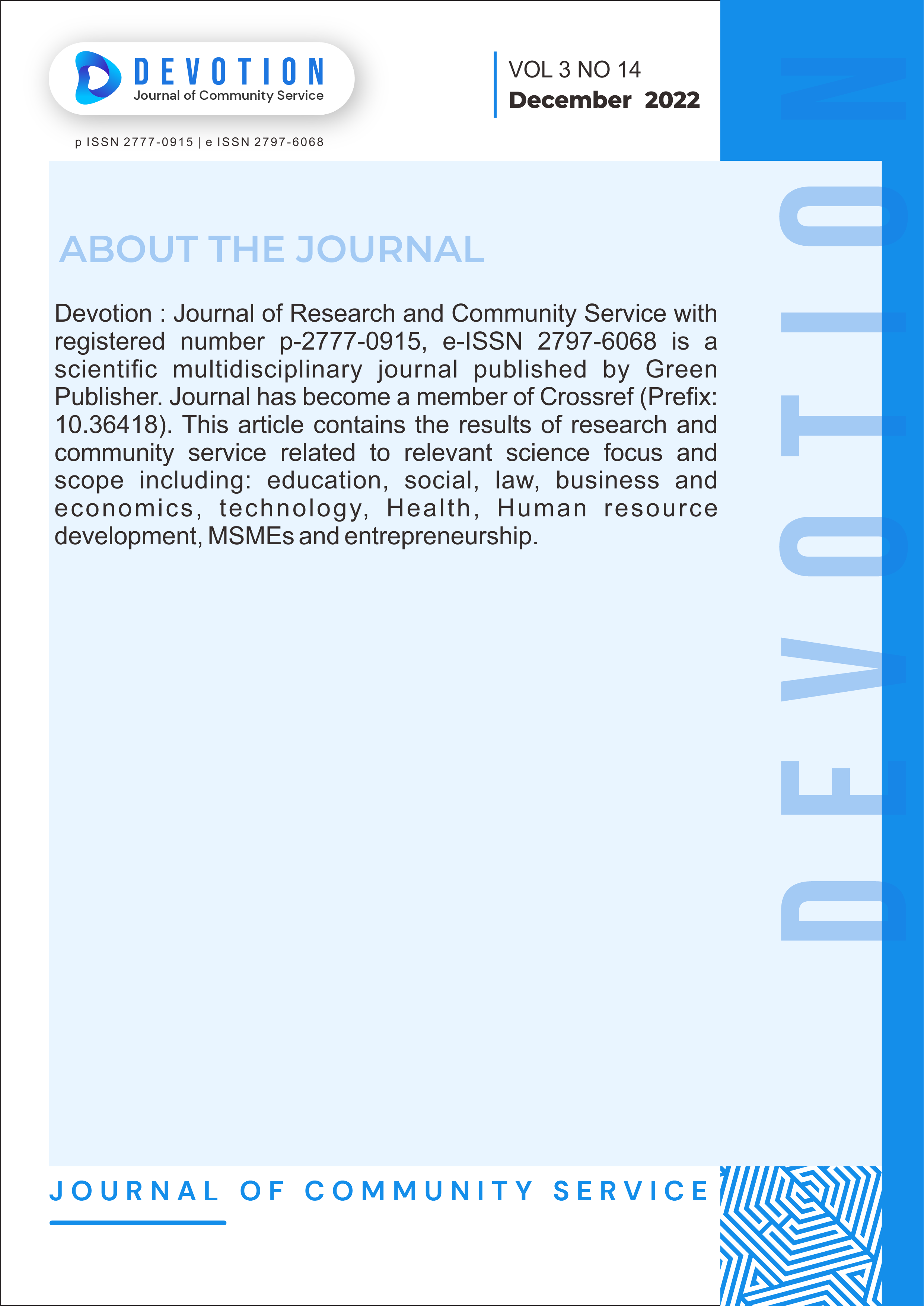Analysis of Satellite Rain Data UsageOn The Rationalization Activities of The Rain Post Network (Case Study: Rationalization of The Jelai Watershed Rain Post Network)
DOI:
https://doi.org/10.36418/dev.v3i14.327Abstract
An alternative solution to the availability of inadequate rain data as hydrological data input is with the help of Global Precipitation Measurement (GPM) satellite rainfall data using remote sensing technology (satellite). The purpose of this study was to find correlations and corrections of data and validate GPM satellite data with rainfall data at rain stations and observation data in the Jelai watershed. The corrected GP M rain data validation results in Nash-Sutcliffe Efficiency (NSE), Root Mean Squared Error (RMSE), Correlation Coefficient (R), and Relative Error (KR). The validation results resulted in NSE values of 0.33, RMSE 48.54, Correlation Coefficient (R) of 0.75, and Relative Error of 0.19 for 2019 and yielded NSE values of -0.14, RMSE 100.24, Correlation Coefficient (R) of -0.36, and Relative Error of 0.23 for 2020. The overall analysis shows that GPM data can be used as an alternative to rain data if in a watershed there is a small number of rain posts that do not meet the WMO criteria. As a suggestion for further research, it is necessary to calibrate and validate by distinguishing between rain data in wet years and dry years
Published
Issue
Section
License
Copyright (c) 2022 Ari Susanto, Wateno Oetomo, Esti Wulandari

This work is licensed under a Creative Commons Attribution-ShareAlike 4.0 International License.
Authors who publish with this journal agree to the following terms:
- Authors retain copyright and grant the journal right of first publication with the work simultaneously licensed under a Creative Commons Attribution-ShareAlike 4.0 International. that allows others to share the work with an acknowledgement of the work's authorship and initial publication in this journal.
- Authors are able to enter into separate, additional contractual arrangements for the non-exclusive distribution of the journal's published version of the work (e.g., post it to an institutional repository or publish it in a book), with an acknowledgement of its initial publication in this journal.
- Authors are permitted and encouraged to post their work online (e.g., in institutional repositories or on their website) prior to and during the submission process, as it can lead to productive exchanges, as well as earlier and greater citation of published work.













